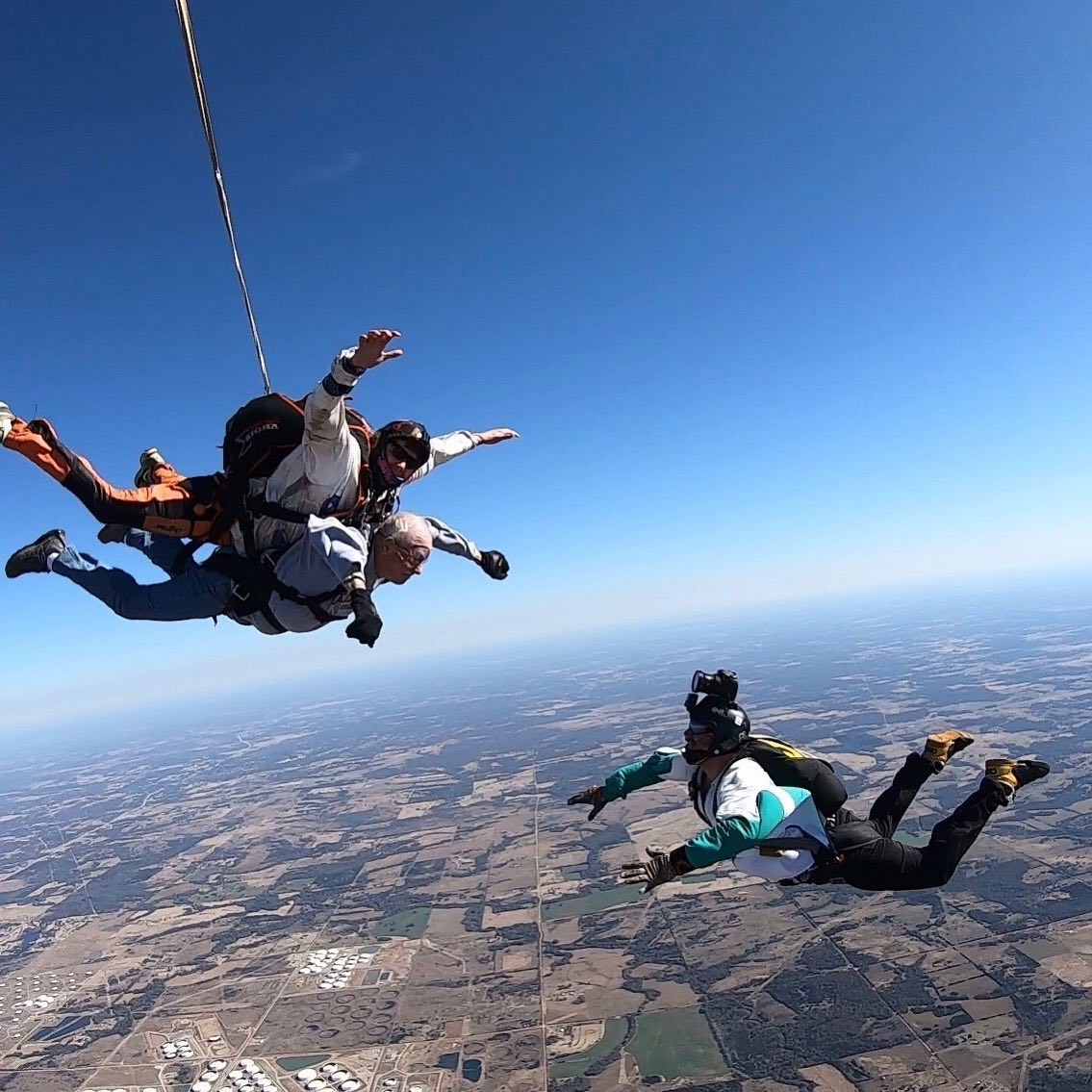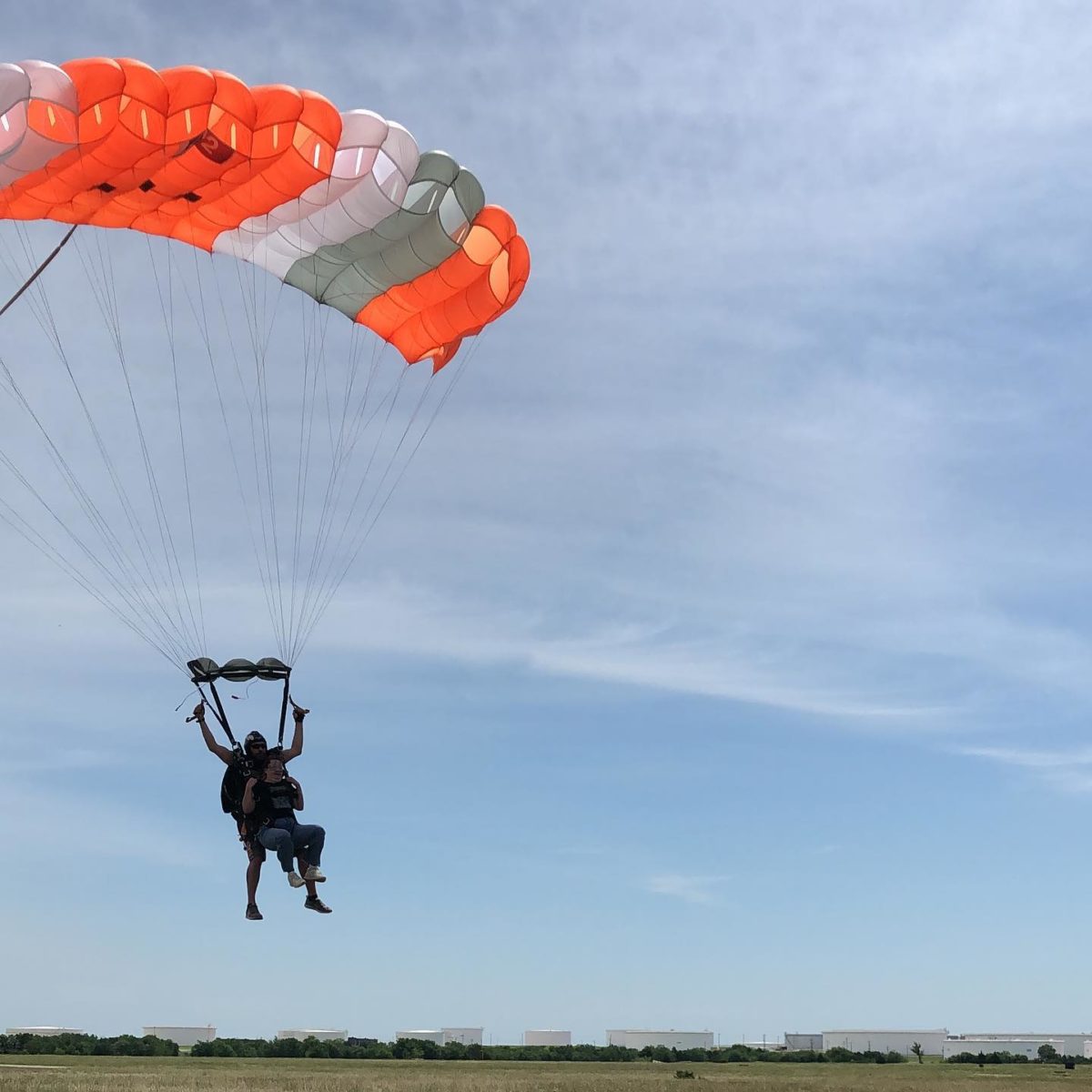Do You Have to Be Physically Fit to Skydive?
Sunday, June 21, 2020
In order to make a tandem skydive or to skydive solo, individuals should be physically fit which includes a good range of flexibility, core strength, reaction time and mental alertness.
By no means does skydiving require someone to be in top CrossFit shape (if that were the case few of us at Oklahoma Skydiving Center would be jumping), but skydiving is more than an amusement park ride. Each participant making a skydive has an active role during the skydive which requires strength and flexibility. Allow us to break it down!
Physical Fitness Requirements for a Tandem Skydive

When making a tandem skydive, one might think that the instructor is doing all of the work and you’re just a passenger. It’s true that the tandem instructor is in control, but the tandem passenger has their role to play in the following areas:
- Total Body Weight
- Boarding the aircraft
- Crouching / Kneeling in the door of the aircraft
- Body Position During Free Fall
- Ability to follow directions
- Have the physical strength to lift one’s legs during the landing sequence
Skydiving Weight Requirement
There is a skydiving weight requirement that every participant should be aware of before arriving at the dropzone. At Oklahoma Skydiving Center the maximum body weight permitted is 250lbs. It should be noted that this weight restriction isn’t black and white as an individual’s body mass index plays a role with how the harness fits the individual. For example, an individual who is 5’5” weighing 250lbs has a different body shape than someone who is 6’2” weighing in at 250lbs. This disparity will affect the fit of the harness on the individual and could disqualify an individual from making a skydive. If you have any concerns or questions about your size or weight feel free to call the dropzone (918) 225-2222 before making a reservation.
Boarding the Aircraft

Boarding a skydiving aircraft is far different than boarding a commercial jet. There isn’t a jet bridge or any assigned seating! The space is confined and requires a bit of crouching, bending and shuffling. Again, you don’t need to be an Olympic athlete, but flexibility and some strength is beneficial!
Crouching / Kneeling in Preparation for Exit
When it’s time to skydive, there will be shuffling towards the door and remember no one is standing straight up as would be found in a commercial aircraft. There is some shuffling involved whereby some agility is required.
Body Position During Free Fall
One of the most important roles a person making a skydive plays is having the correct body position during free fall. Imagine the arched shape of a banana – this is the needed body position to allow for a stable free fall.
The arched position can put some pressure on the lower back and can prove to be uncomfortable for those that have experienced back surgery or suffer from chronic back issues. It should also be noted that during the deployment sequence of a skydive, the fall rate slows down dramatically. This opening sequence is referred to as ‘opening shock’ and can be uncomfortable for those suffering from neck and lower back issues.
Of course, each person has varying degrees of discomfort and an achy back wouldn’t normally preclude someone from making a skydive. When in doubt, it’s always best to consult with your physician.
Ability to Follow Directions
Having the cognitive ability to follow directions is also important as the tandem instructor will be communicating throughout the experience and compliance is needed to ensure the safety of all.
Lifting Legs During the Landing Sequence

The most common injury related to tandem skydiving is usually a twisted or broken ankle or even a broken leg. Nine times out of ten, injuries occur due to the inability of the tandem passenger to have the needed core strength to lift legs up during the landing sequence.
Physical Fitness for Learning to Skydive Solo
The physical requirements for learning to skydive solo are much the same, however, due to the added responsibilities of doing everything on one’s own, the cognitive mindset to respond quickly is very important. Flexibility, strength, and good reaction time is needed.
Have questions? Feel free to contact us with any questions!
Copyright © 2025, Oklahoma Skydiving Center, All Rights Reserved.
DropZone Web Design & Marketing by Beyond Marketing, LLC





